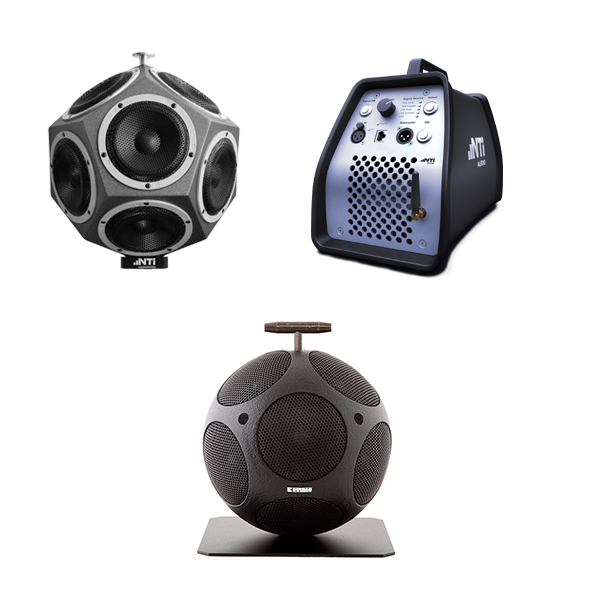Dodecs |Sound Power | Building a Dodec with 3D Printer

Dodecs are the tool of choice for performing acoustical surveys of rooms of all types. Pat Brown explains sound power – an important dodec specification. Below is a video that demonstrates building a Dodec with a 3D printer.
Many audio and acoustic practitioners are seeing the utility of the dodecahedron, or “dodec” loudspeaker. It is the tool of choice for performing acoustical surveys of rooms of all types, where the objective is to “light up the room” with sound and measure its decay time and other behaviors. On several occasions we have published “How To’s” on building them. Just search for “dodec” in the SynAudCon library. The most recent method, and certainly the most fascinating is the use of 3D printing. Here is an excellent overview that Jim Tassey shared with our Member’s Forum. The necessary files can be downloaded here.
Sound Power
While we are used to thinking of a loudspeaker’s output in terms of the axial sensitivity, a better measure for a dodec is the sound power level, LW. LW describes the total radiated acoustic power from the source, expressed in dB rel. 1 pW. Since dodecs are usually packaged with an amplifier/processor, these are included in the rating. Unlike sensitivity, LW is independent of the distance from the source. In general, the higher the LW the better.
For example, the new NTI Audio DS3 is rated at LW = 121 dB when used with its partnered amplifier/processor. The Outline Globe Source is rated at LW = 130 dB when used with its partnered amplifier/processor.
LW can be converted into LP (sound pressure level) by remembering that the LW and LP are numerically equal at a distance of 0.282 m for an omni source. By subtracting 11 dB, LP can be extrapolated to 1 m, the common reference distance for sensitivity. The influence of directivity can be included by adding the directivity index DI to the LP. Since a dodec basically has no directivity, this step is unnecessary, but for a directional source it is.
For an in-depth presentation of these relationships, see Sound System Engineering 4th Edition and our online Course 300 – Sound Reinforcement for Designers. Both explain the importance of fashioning the LW using directivity in systems that must preserve the information contained in the signal in reverberant spaces. Order does not arise from chaos without intervention.

Figure 1 – NTI DS2 and amplifier (top). Outline Globe Source (bottom).
Big Rooms, Big Sound
The need for high sound power was reinforced during our recent Sound System Design class in Indianapolis, IN. We took the Outline Globe Source to Hinkle Fieldhouse at Butler University for an evening session. Cavernous spaces such as Hinkle require a lot of acoustic energy for testing. I was able to max out the Globe Source on a log sweep – something I rarely do.
Balloons, Five Cents!
Dodecs are expensive, and they don’t travel well. Some investigators choose to pop balloons (or other impulsive events) instead. It is certainly simpler and cheaper, but we are talking apples and oranges. A balloon pop (or any impulsive source) has the signal spectrum embedded in it. There is no control over the spectrum. The objective is to just get a lot of broadband energy into the room – usually a low/mid frequency hay stack. While useful for collecting T30, it is useless for convolution, C50 and STI because the spectrum is already cooked in and one cannot subtract it out to substitute another, such as the spectrum of a male or female voice.
A room impulse response (and transfer function) made from a log sweep is spectrum neutral, like a filter. The investigator can pass any signal they like through the RIR using convolution. Male voice, female voice, music – the choices are infinite. This is especially important when the RIR will be used to qualify a computer room model, as it provides an objective reference for comparison. A special thank you to Bengt-Inge Dalenback, CATT-Acoustic author, for pointing out this important but obscure fact. See Room Survey 35 – Hinkle Fieldhouse for a comparison.
Conclusion
I publish the Hinkle data here. In the meantime, if you don’t have a dodec, you can save your pennies and buy one, or fabricate one from wood or a 3D print. Use a robust transducer and appropriate electronics to produce as high an LW as possible. You never know when you’ll need it. pb
